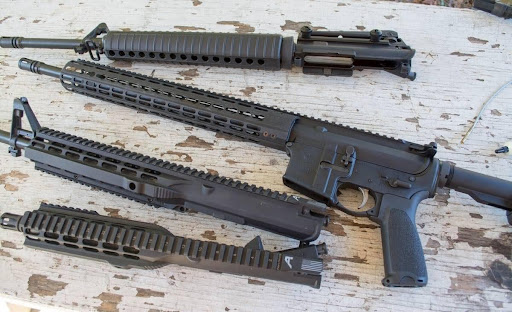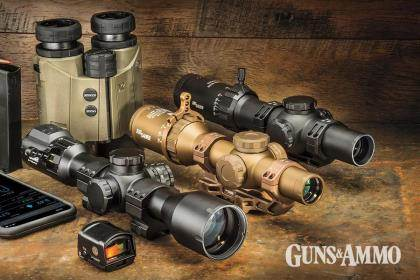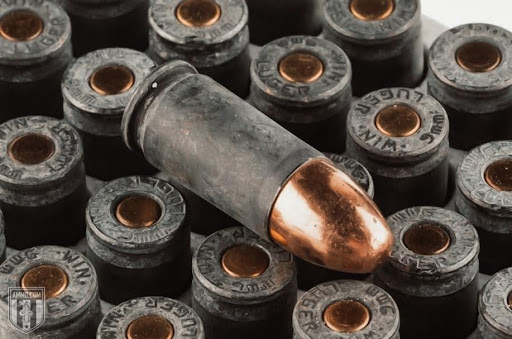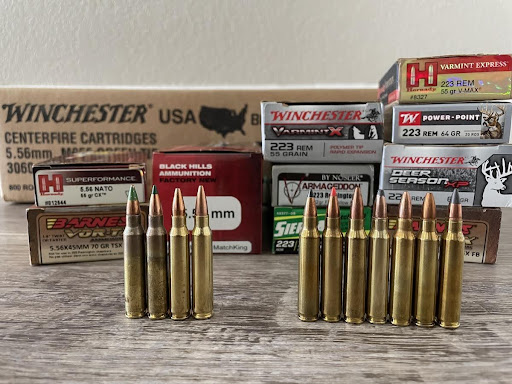Introduction
This report helps you choose practice ammunition for five common calibers and platforms: 9mm (pistol), .223/5.56 (AR-style rifle), .308 (larger rifle / precision), .22 LR (rimfire), and 12 gauge (shotgun). It focuses on practical considerations—cost, availability, function, wear on your firearm, training value, and reloading/reuse—so you can pick the best option for the skills you want to build without getting political.
Key factors to consider for any caliber
- Training goal: dry-fire, marksmanship, rapid-fire, malfunction drills, recoil conditioning, or long-range practice — each has different ideal ammo.
- Cost & availability: practice ammo should be affordable and reliably available if you train often.
- Recoil & ergonomics: lower-recoil loads let you practice more reps; full-power loads are useful for real-world recoil conditioning.
- Reliability: especially for defensive-style pistols and semi-auto rifles, pick ammo that feeds and cycles cleanly in your firearm.
- Barrel and action wear: steel-cased or corrosive ammo can accelerate wear and require careful cleaning; brass is preferred if you want to reload or reduce fouling issues.
- Range rules: indoor ranges may prohibit steel-cased, steel shot, armor-piercing, or certain calibers/loads.
- Environmental & safety constraints: lead-free or plated bullets may be required at some ranges; shot material and wad type affect shot patterns and ricochet behavior for shotguns.
9mm — Versatile, cost-effective, great for repetition
Best for: pistol marksmanship, draw-and-fire practice, speed and malfunction drills.
What to pick:
- Typical practice choice: Full-metal-jacket (FMJ) 115–124 gr (common weights) as a baseline for reliable feeding and lower cost.
- Low-recoil options: Reduced-velocity or +P? — Don’t mix pressures within the same training session. Use reduced or “range” loads for high-rep drills to save wear and lessen fatigue, but test them in your pistol for reliable cycling first.
- Case material: Brass is ideal if you reload or want easier extraction; steel-plated cases are cheaper but some ranges ban them and they’re harder on extractors.
- Reliability check: Run a short box through your pistol before buying in bulk—some guns are picky about bullet profile and case material.
Notes: 9mm practice ammo is plentiful and usually affordable; prioritize reliable feeding and a consistent bullet profile for accuracy practice.
Key factors to consider for any caliber
- Training goal: dry-fire, marksmanship, rapid-fire, malfunction drills, recoil conditioning, or long-range practice — each has different ideal ammo.
- Cost & availability: practice ammo should be affordable and reliably available if you train often.
- Recoil & ergonomics: lower-recoil loads let you practice more reps; full-power loads are useful for real-world recoil conditioning.
- Reliability: especially for defensive-style pistols and semi-auto rifles, pick ammo that feeds and cycles cleanly in your firearm.
- Barrel and action wear: steel-cased or corrosive ammo can accelerate wear and require careful cleaning; brass is preferred if you want to reload or reduce fouling issues.
- Range rules: indoor ranges may prohibit steel-cased, steel shot, armor-piercing, or certain calibers/loads.
- Environmental & safety constraints: lead-free or plated bullets may be required at some ranges; shot material and wad type affect shot patterns and ricochet behavior for shotguns.
9mm — Versatile, cost-effective, great for repetition
Best for: pistol marksmanship, draw-and-fire practice, speed and malfunction drills.
What to pick:
Typical practice choice:
Full-metal-jacket (FMJ) 115–124 gr (common weights) as a baseline for reliable feeding and lower cost.
Low-recoil options: Reduced-velocity or +P? — Don’t mix pressures within the same training session. Use reduced or “range” loads for high-rep drills to save wear and lessen fatigue, but test them in your pistol for reliable cycling first.
Case material: Brass is ideal if you reload or want easier extraction; steel-plated cases are cheaper but some ranges ban them and they’re harder on extractors.
Reliability check: Run a short box through your pistol before buying in bulk—some guns are picky about bullet profile and case material.
Notes:
9mm practice ammo is plentiful and usually affordable; prioritize reliable feeding and a consistent bullet profile for accuracy practice.

.223 Rem / 5.56 NATO — AR-platform standard, but watch pressure & bullet type
Best for: rapid-fire rifle work, fundamentals, short-to-mid range marksmanship.
What to pick:
- Commercial vs NATO: 5.56 NATO has higher chamber pressure than .223 Rem. Don’t fire 5.56-spec ammo in rifles chambered only for .223 without confirming compatibility. If your rifle is chambered for 5.56, .223 commercial ammo generally works fine.
- Practice bullets: FMJ 55–62 grain rounds are common for general practice. “Green tip” (steel-core) M855 style rounds offer ballistics similar to 62 gr FMJ but have range restrictions at some ranges and may behave differently on barriers.
- Brass vs steel-cased: Brass is reloadable and cleaner. Steel-cased ammo is cheaper but sometimes less reliable and may foul the chamber differently; many ranges ban steel-cased rounds.
- Subsonic / specialty rounds: Useful for suppressed training, but don’t substitute standard supersonic drills if you’re training recoil/ballistics for unsuppressed shooting.
Notes:
- If your training includes shooting at varied distances or barrier drills, choose bullet types and weights that mirror the service or match ammo you expect to use. Always confirm chambering and barrel twist rates for bullet stabilization at your intended weights.

.308 Winchester / 7.62×51 — Precision and power, but more costly
Best for: precision/long-range practice, heavy-recoil management, bolt-action and semi-auto precision rifles.
What to pick:
- Practice choice: FMJ or “ball” loads in moderate weights (147–180 gr common) offer reliable feeding at lower cost than match-grade bullets.
- Match vs practice: Use cheaper FMJ for volume practice and save match-grade bullets (precision, consistent powder, higher-quality bullets) for working zeroes and competition.
- Reloading: Brass .308 is widely reloadable and common in precision shooter circles to control costs.
- Barrel life & fouling: High-velocity loads and magnum-level powders increase wear—if you shoot a lot, consider load selection with barrel life in mind.
Notes:
- Expect higher per-round cost than pistol/AR calibers. For long-range skills, balance reps with precision ammunition: do general fundamentals with cheaper ammo, and verify zero and do precision work with high-quality match ammo.

.22 LR — Cheap, low-recoil, perfect for fundamentals
Best for: dry-fire extension, new shooters, high-repetition fundamentals, transition drills.
What to pick:
- Typical practice choice: Standard-velocity or high-velocity lead-nosed rounds for general marksmanship. Subsonic or match-grade .22LR for precision work.
- Costs & use: .22LR is the least expensive per round and ideal for large-volume drills like sight alignment, trigger control, and follow-up shots.
- Barrel leading & cleanliness: Lead bullets can lead barrels if you shoot high volumes without cleaning; using match-grade or copper-plated rounds can reduce leading.
- Reliability caution: Rimfire ammo is notoriously variable; test brands in your firearm—what runs reliably in one pistol/rifle may not in another.
Notes:
- Rimfire rounds are not reloadable. Their low recoil and low cost make them the best choice for building fundamentals and saving money on thousands of repetitions.
12 Gauge — Versatile, lots of shot/load options
Best for: shotgun patterning, target acquisition, recoil management, and specific training (clay shooting, tactical shotgun drills).
What to pick:
- Target practice: 1 oz to 1 1/8 oz target loads with shotgun-specific shot sizes (e.g., 7.5–8 for sporting clays/target). They are lower-recoil and designed for range use.
- Reduced-recoil shells: Low-recoil or “light” loads are available for training and high-rep sessions. They’re great for new shooters or when practicing rapid target transitions without heavy fatigue.
- Shot material: Lead shot patterns differently from steel. Many shotgun ranges have rules about steel vs lead (many indoor ranges require steel or non-toxic shot for environmental reasons), and steel tends to pattern tighter but can cause different barrel stress. Steel will not deform like lead and can result in different felt recoil and pattern.
- Slugs & buckshot: Use slugs or buckshot when training for penetration or defensive scenarios—expect higher recoil and different point-of-impact. Always check range permission to shoot slugs.
- Wad design & patterning: Wad type affects patterns; when patterning chokes and loads, use consistent target loads to get meaningful results.
Notes:
- Shotguns are flexible trainers — choose loads that match the skill: low-recoil target loads for volume practice, heavier buckshot/slugs for defensive or penetration training.

Practical buying checklist
- Define the training session: precision vs reps vs malfunction drills.
- Check firearm compatibility: chambering (especially .223 vs 5.56), twist rates for bullet stabilization, and magazine constraints.
- Range rules: steel-cased ammo? steel shot? tracers? indoor restrictions?
- Try before you buy in bulk: run a box through the gun to test reliability and point-of-impact.
- Prefer brass if you want to reload or reduce extraction issues.
- Match bullet weight/type to your training objective: FMJ for general practice, match for precision, reduced loads for high-volume repetitions.
- Mind barrel life and maintenance: some cheap steel-cased or corrosive loads require more frequent cleaning.
Store safely and rotate stock—old ammo can be less reliable.

Cost and logistics (practical guidance, not hard numbers)
- Cheapest per round: typically .22 LR, making it ideal when you want volume.
- Low-to-mid cost, wide availability: 9mm—good balance of economy and realism for pistol training.
- Moderate cost: .223/5.56—cheaper than .308 but more expensive than pistol calibers; consider brass vs steel tradeoffs.
- Highest per-round costs: .308 and certain specialty or match loads for any caliber.
- Shotguns: cost varies by load and shot material; target loads are often reasonable for patterning and volume practice but buckshot and slugs run pricier.
Final recommendations by training objective
- Fundamentals & volume: use .22 LR for rifles/pistols when possible; 9mm FMJ for pistols if you need centerfire feel.
- Speed & malfunction drills: 9mm or .223 with duty-like loads; test reliability first.
- Precision & long-range: practice with .308 or high-quality .223 loads; use match-grade ammo when checking zero or doing serious accuracy work.
- Shotgun patterning & transitions: target loads and low-recoil shells for volume; buckshot/slugs for scenario-specific drills.
- Budget-conscious mix: combine low-cost practice ammo for high reps (.22 LR or 9mm range loads) with occasional live-fire sessions using service/match ammo for realistic recoil and ballistics.

Closing note
To conclude, selecting practice ammunition for each caliber is a balance between affordability, consistent performance, and mimicking the characteristics of your premium defensive or hunting rounds. For most applications, budget-friendly Full Metal Jacket (FMJ) ammunition is ideal for high-volume range use. However, shooters should always test their specific firearm with different brands and bullet weights to find what performs best and most reliably
Choosing practice ammo is about matching your purpose, your platform, and the constraints of your range and budget. Buy a few boxes of different types, test them in your firearm, and then scale up purchases of whichever combination delivers consistent reliability, acceptable recoil, and the training outcome you want. If you tell me which firearm(s) and training goals you have.




